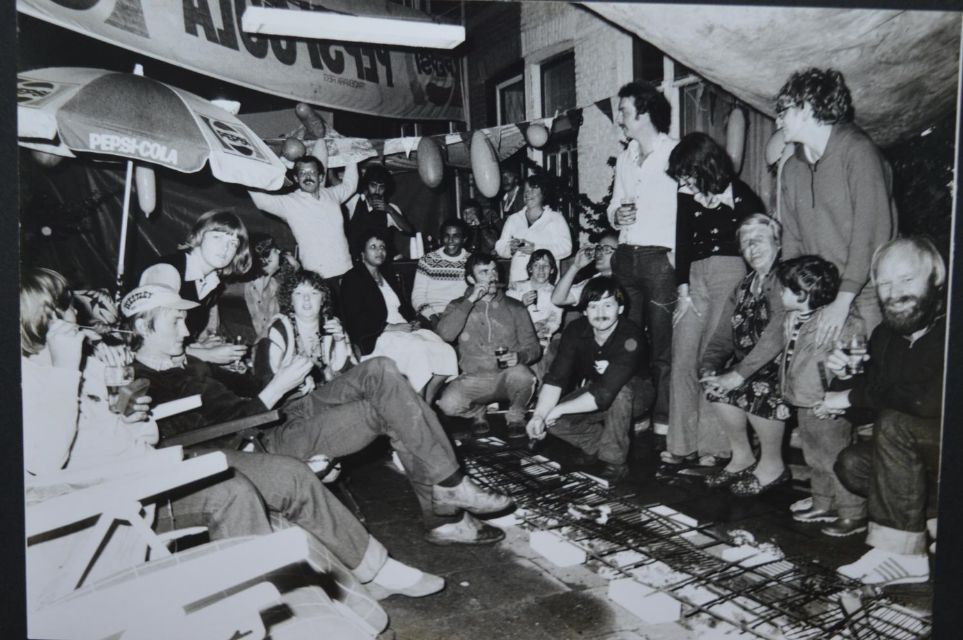Hooked on the street
In the late 1970s, a number of residents became interested in the history of the street and decided to research it. They soon reached a dead end in the city archives of Leiden, as records of the Wolmaransstraat ended at the beginning of the twentieth century. But guess what? The Wolmarans was first part of the town of Oegstgeest before it became part of Leiden, and the street turned out to have been built in 1880!
Plenty of reasons for a party, because in 1980 the Wolmaransstraat would celebrate its 100th anniversary. Sponsored by Heineken, the residents gave a banging 'centenary celebration', which made the local newspapers. All they had to do to get a bar and some barrels from Heineken was put up a Heineken banner.
Every house in the Wolmarans has a little hook attached to the front, so the banner was hung using those. Ton and Loes have placed a metal heart above the hook, which consists of the old attachment pieces of the lanterns of the Wolmarans which were welded together to form a heart.
The hooks connect the houses in this street, both literally and figuratively. They have served several purposes over the years, says Mr. Bastiaan. For example, in addition to the banner and garlands during parties, parachutes were also stretched over the street so that people could still eat and drink outside on the street during rainy days.
Nowadays that doesn't happen anymore, Mr. Bastiaan sighs. He and his wife are the last of the 'old guard' left in the street - the rest have either moved away or have passed away. In general, the hooks remain unused these days. Only the well-known orange flags are still traditionally hung on them when the national Dutch football team plays. But even that is no longer self-evident: “Some people, like there,” Mr. Bastiaan points to a house on his right, “and there,” he points to a house across the street, “think it's too much noise, those fluttering flags in front of their house, so they don't participate.”
There seems to be an overlap in houses that do not participate in hanging the orange flags and houses that do not have a bench in front of the door. It is quite the contrast with Mr. and Mrs. Bastiaan’s house, which has a nice seat in front of the door surrounded by all kinds of plants. Their front garden is the only garden they have, which is why they are always there. The houses across the street do have a backyard these days, Ton says, so the neighbors across the street prefer to sit there, where they can enjoy the privacy. Having a backyard also means having a back door and a place to park their bicycles, meaning the front door is used less and less. Ton shrugs: “That means you have less contact with each other. I think that's a shame, but there’s nothing I can do about it."
